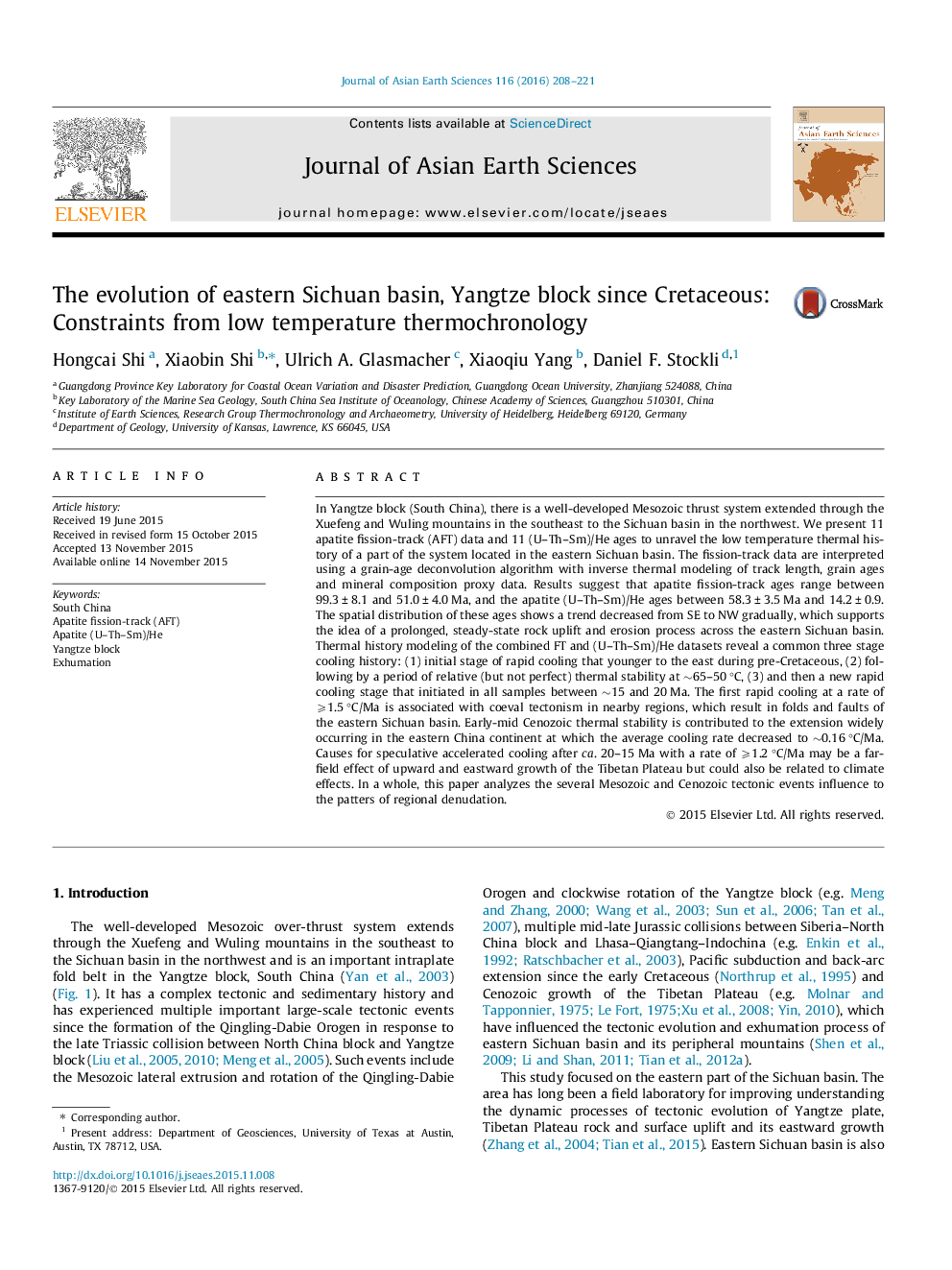| کد مقاله | کد نشریه | سال انتشار | مقاله انگلیسی | نسخه تمام متن |
|---|---|---|---|---|
| 4730265 | 1640355 | 2016 | 14 صفحه PDF | دانلود رایگان |

• AFT and (U–Th–Sm)/He data are used to elucidate evolution of eastern Sichuan basin.
• Three cooling phases are constrained based on the low temperature thermochronology.
• Northwestward migration of the uplift process in Cretaceous is documented.
• Slow exhumation is associated with the extension occurred in eastern China continent.
• Cenozoic cooling is attributed to the growth of Tibetan Plateau and climate effect.
In Yangtze block (South China), there is a well-developed Mesozoic thrust system extended through the Xuefeng and Wuling mountains in the southeast to the Sichuan basin in the northwest. We present 11 apatite fission-track (AFT) data and 11 (U–Th–Sm)/He ages to unravel the low temperature thermal history of a part of the system located in the eastern Sichuan basin. The fission-track data are interpreted using a grain-age deconvolution algorithm with inverse thermal modeling of track length, grain ages and mineral composition proxy data. Results suggest that apatite fission-track ages range between 99.3 ± 8.1 and 51.0 ± 4.0 Ma, and the apatite (U–Th–Sm)/He ages between 58.3 ± 3.5 Ma and 14.2 ± 0.9. The spatial distribution of these ages shows a trend decreased from SE to NW gradually, which supports the idea of a prolonged, steady-state rock uplift and erosion process across the eastern Sichuan basin. Thermal history modeling of the combined FT and (U–Th–Sm)/He datasets reveal a common three stage cooling history: (1) initial stage of rapid cooling that younger to the east during pre-Cretaceous, (2) following by a period of relative (but not perfect) thermal stability at ∼65–50 °C, (3) and then a new rapid cooling stage that initiated in all samples between ∼15 and 20 Ma. The first rapid cooling at a rate of ⩾1.5 °C/Ma is associated with coeval tectonism in nearby regions, which result in folds and faults of the eastern Sichuan basin. Early-mid Cenozoic thermal stability is contributed to the extension widely occurring in the eastern China continent at which the average cooling rate decreased to ∼0.16 °C/Ma. Causes for speculative accelerated cooling after ca. 20–15 Ma with a rate of ⩾1.2 °C/Ma may be a far-field effect of upward and eastward growth of the Tibetan Plateau but could also be related to climate effects. In a whole, this paper analyzes the several Mesozoic and Cenozoic tectonic events influence to the patters of regional denudation.
Journal: Journal of Asian Earth Sciences - Volume 116, February 2016, Pages 208–221